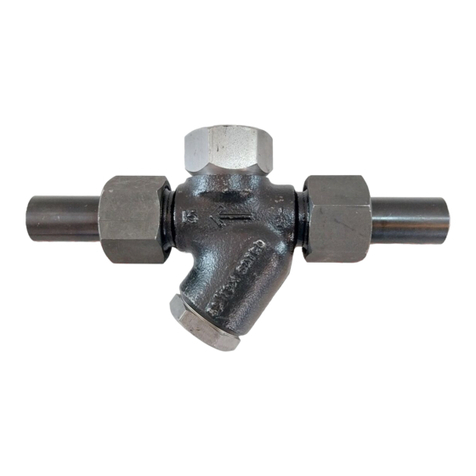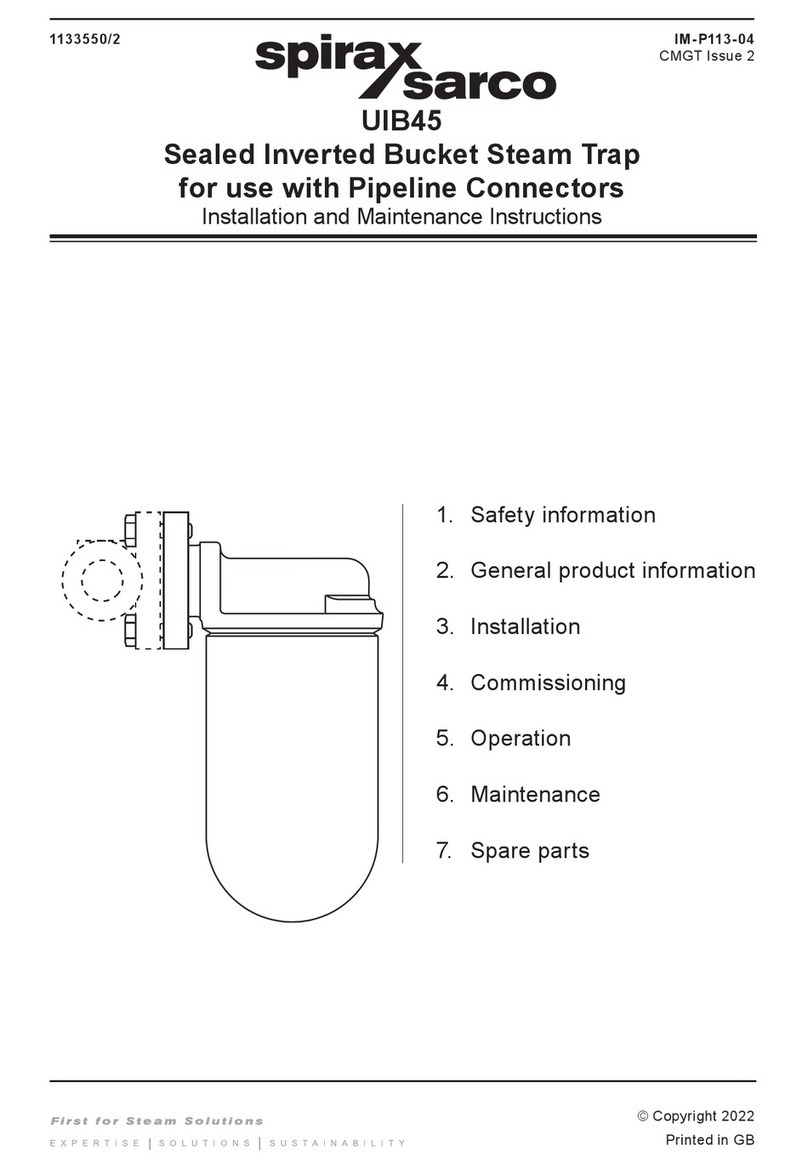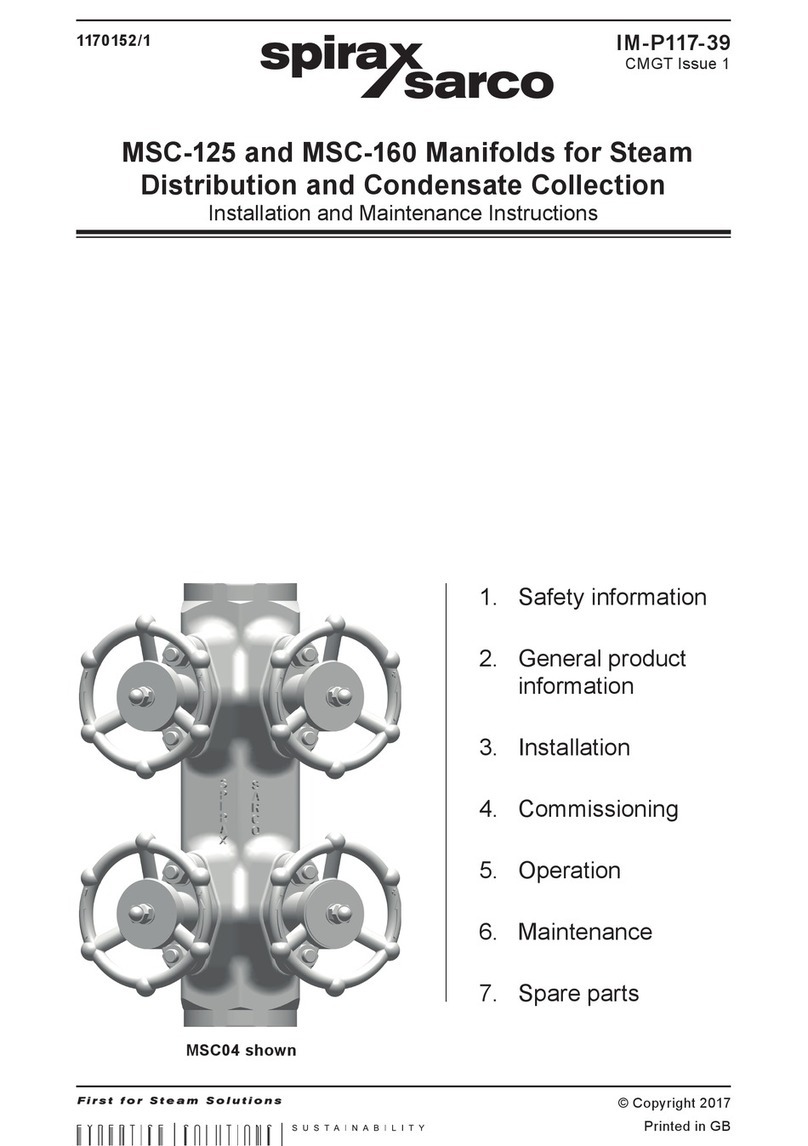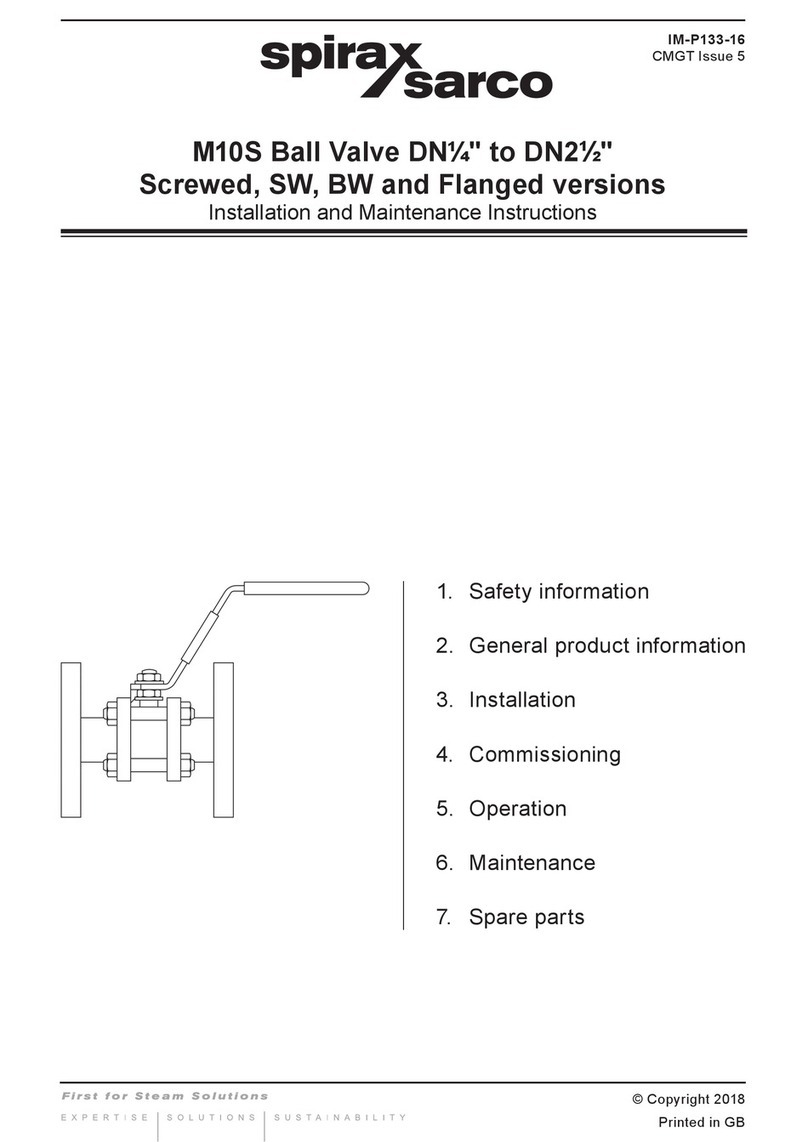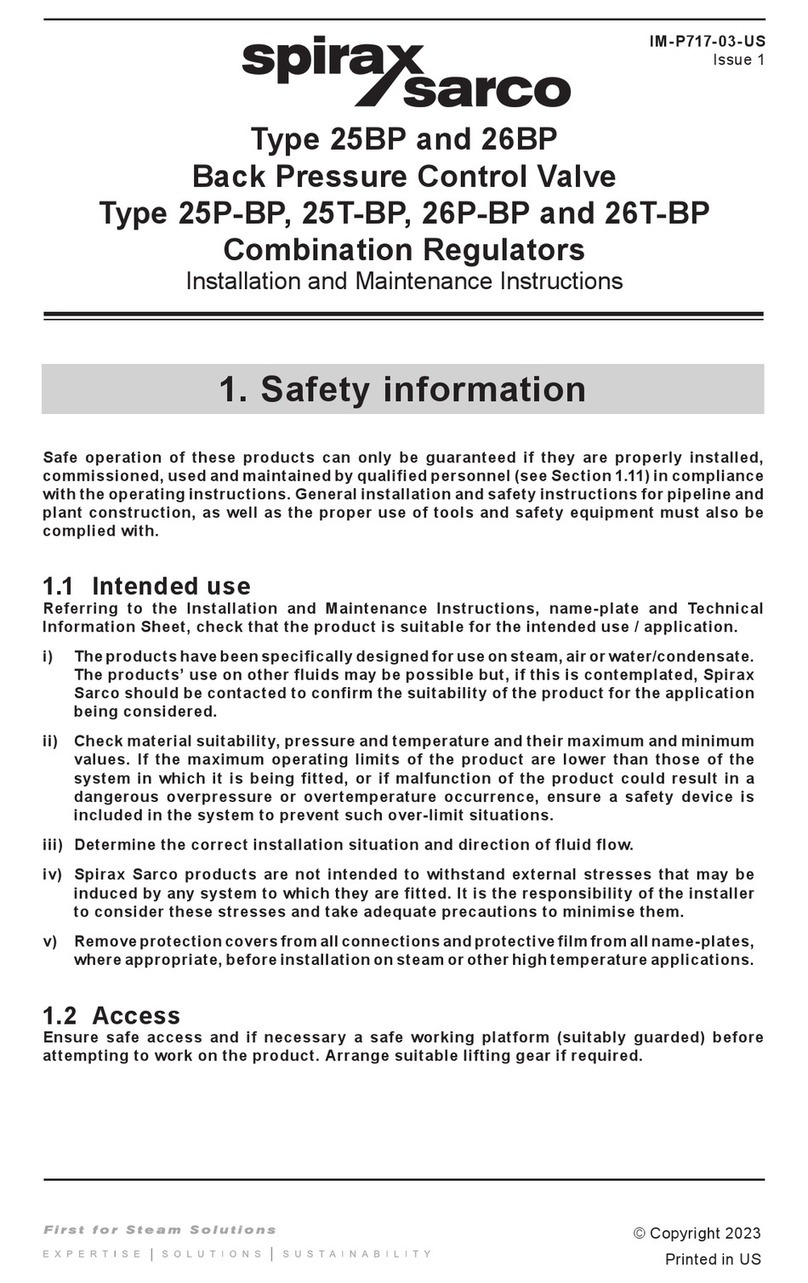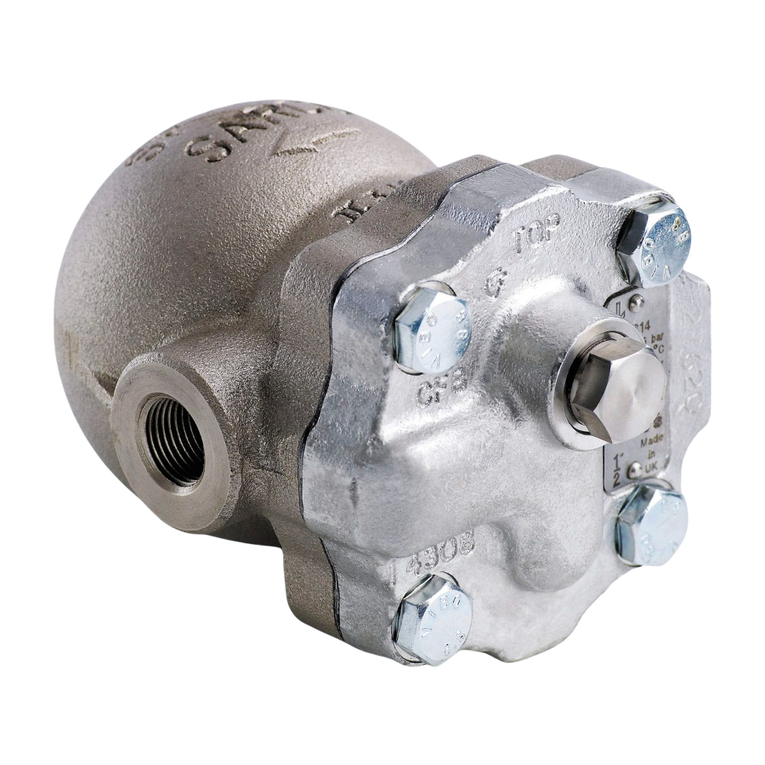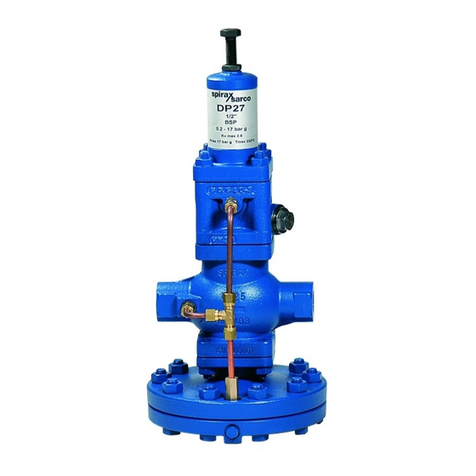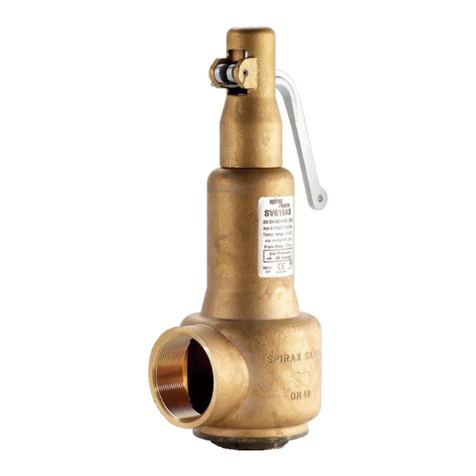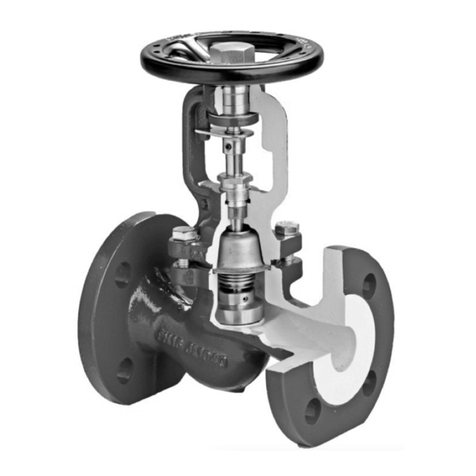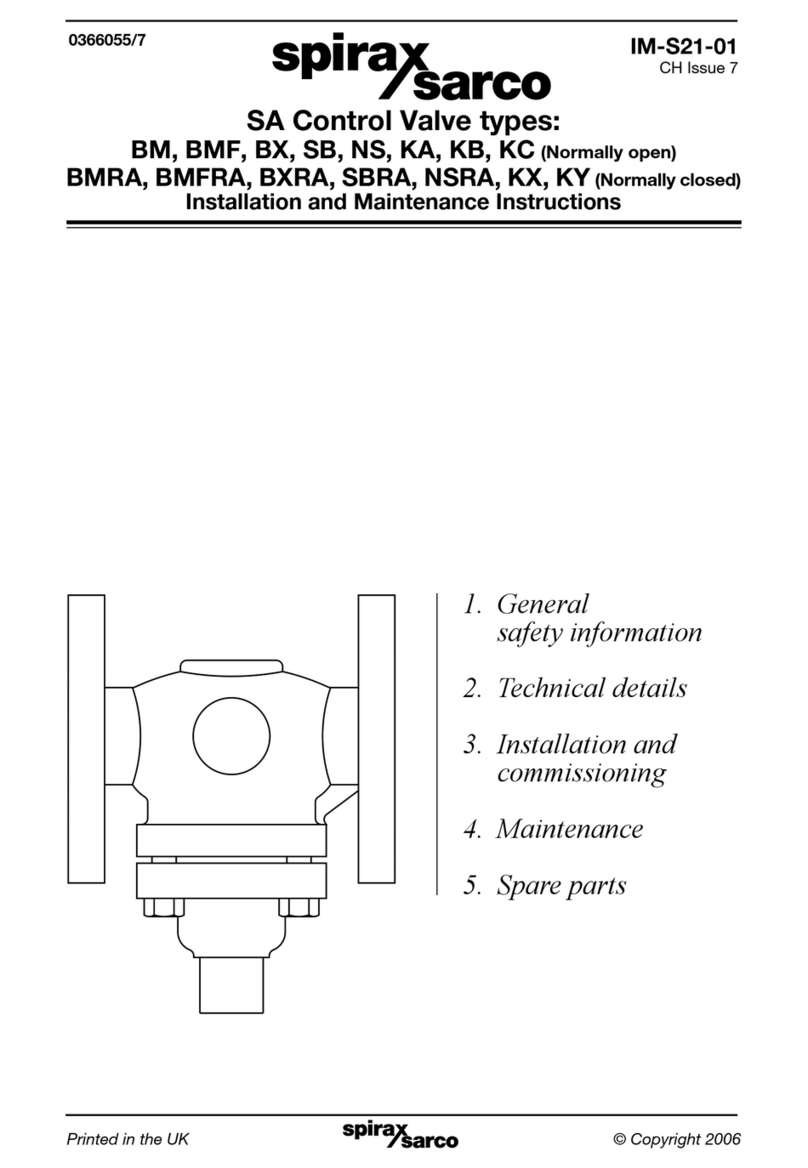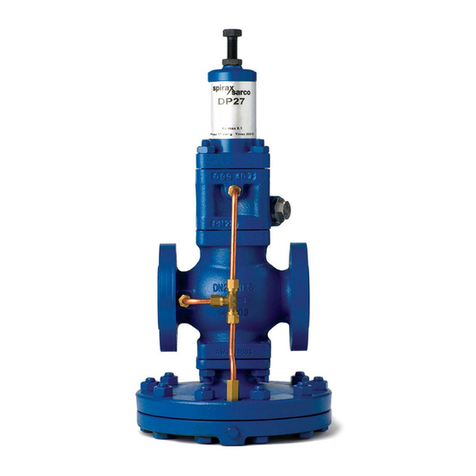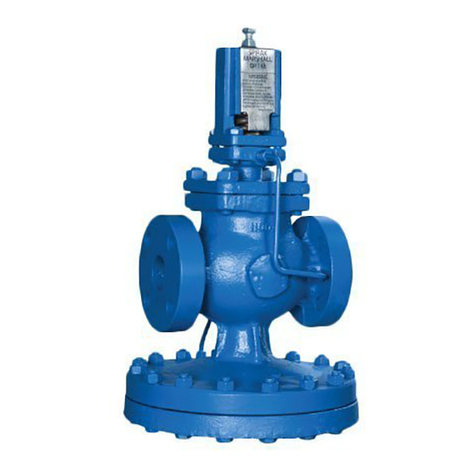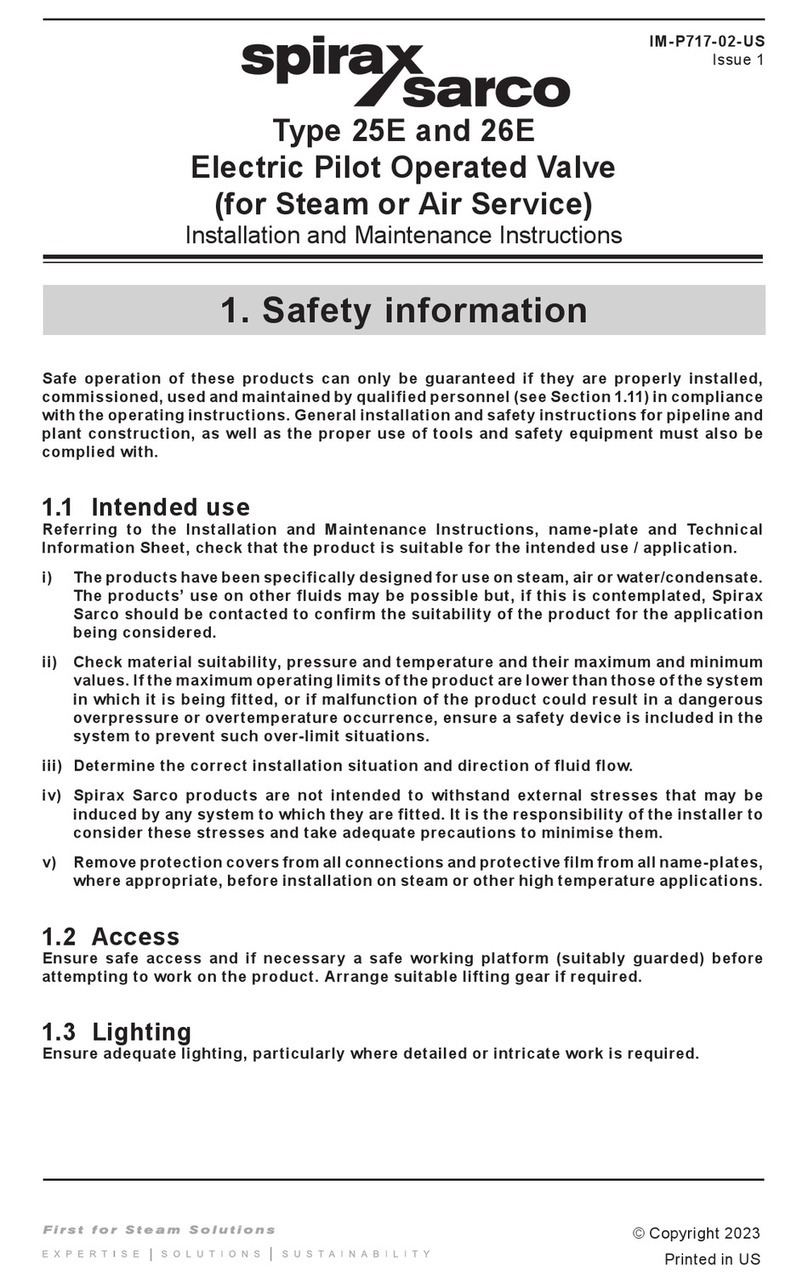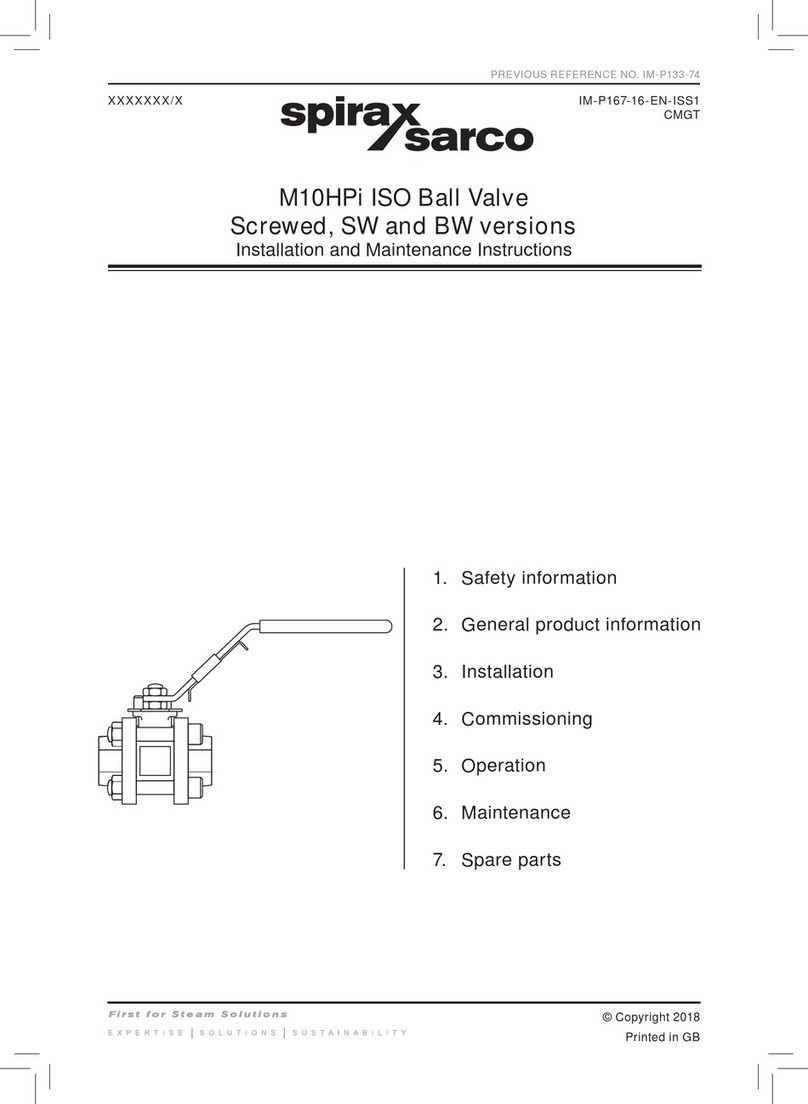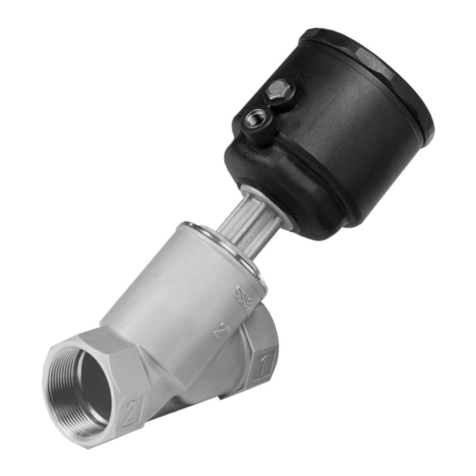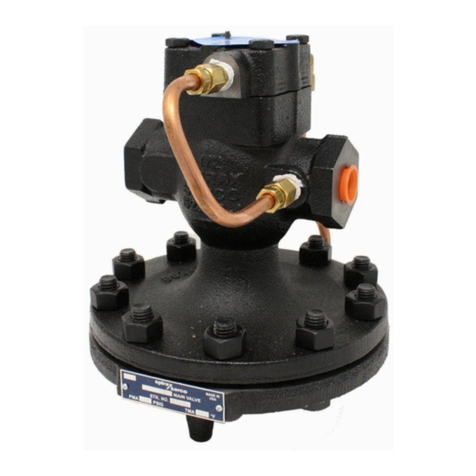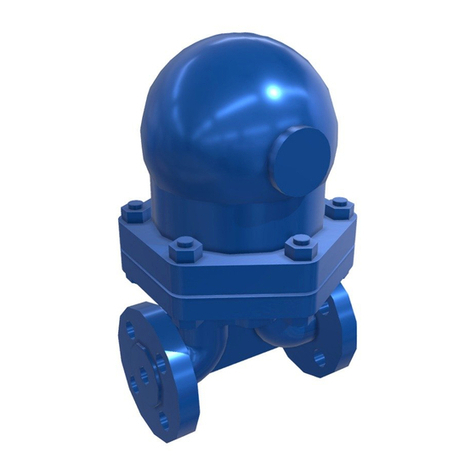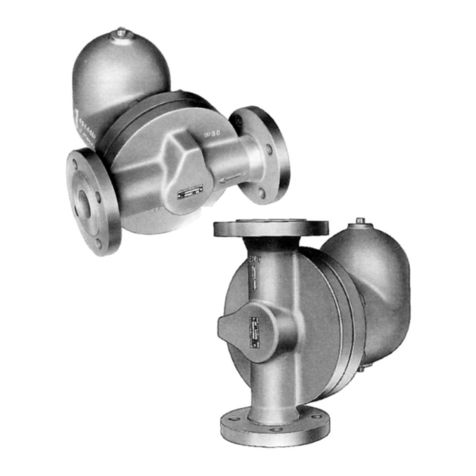
IM-P157-38 CMGT Issue 4 3
Steam/Water Mixing Stations (MkII valves - 2002 onwards) Safety and Operation
Safe operation of the unit can only be guaranteed if it is properly installed, commissioned and
maintained by a qualified person (see Section 11 of the attached Supplementary Safety Information)
in compliance with the operating instructions. General installation and safety instructions for
pipeline and plant construction, as well as the proper use of tools and safety equipment must
also be complied with.
1.1 Pressure
Before attempting any maintenance of any component of the steam/water mixing station consider
what is or may have been in the pipeline. Ensure that any pressure is isolated and safely vented
to atmospheric pressure before attempting to maintain any component, e.g. mixing valve, hose
etc. This is easily achieved by fitting Spirax Sarco depressurisation valves type DV (see separate
literature for details). Discharge contents of the hose and station by pulling the gun trigger and
eliminate pressure until water flow stops. Do not assume that the system is depressurised even
when the pressure gauge indicates zero.
1.2 Temperature
Allow time for temperature to normalise after isolation to avoid the danger of burns. For personal
protection wear protective clothing, especially heavy duty gloves and safety glasses.
PTFE:
If parts made from PTFE have been subjected to a temperature approaching 260 °C (500 °F) or
higher, they will give off toxic fumes, which if inhaled are likely to cause temporary discomfort.
It is essential for a no smoking rule to be enforced in all areas where PTFE is stored, handled, or
processed as persons inhaling the fumes from burning tobacco contaminated with PTFE particles
can develop 'polymer fume fever'.
Viton:
If parts made from Viton have been subjected to a temperature approaching 315 °C (599 °F) or
higher, it may have decomposed and formed hydrofluoric acid. Avoid skin contact and inhalation
of any fumes as the acid will cause deep skin burns and damage the respiratory system.
1.3 Disposal
The product is recyclable. No ecological hazard is anticipated with the disposal of this product
providing due care is taken, except;
PTFE:
-Can only be disposed of by approved methods, not incineration.
-Keep PTFE waste in a separate container, do not mix it with other rubbish, and consign it to
a landfill site.
Viton:
-Can be land filled, when in compliance with National and Local regulations.
-Can be incinerated, but a scrubber must be used to remove Hydrogen Fluoride, which is evolved
from the product and with the compliance to National and Local regulations.
-Is insoluble in aquatic media.
1. Safety information

